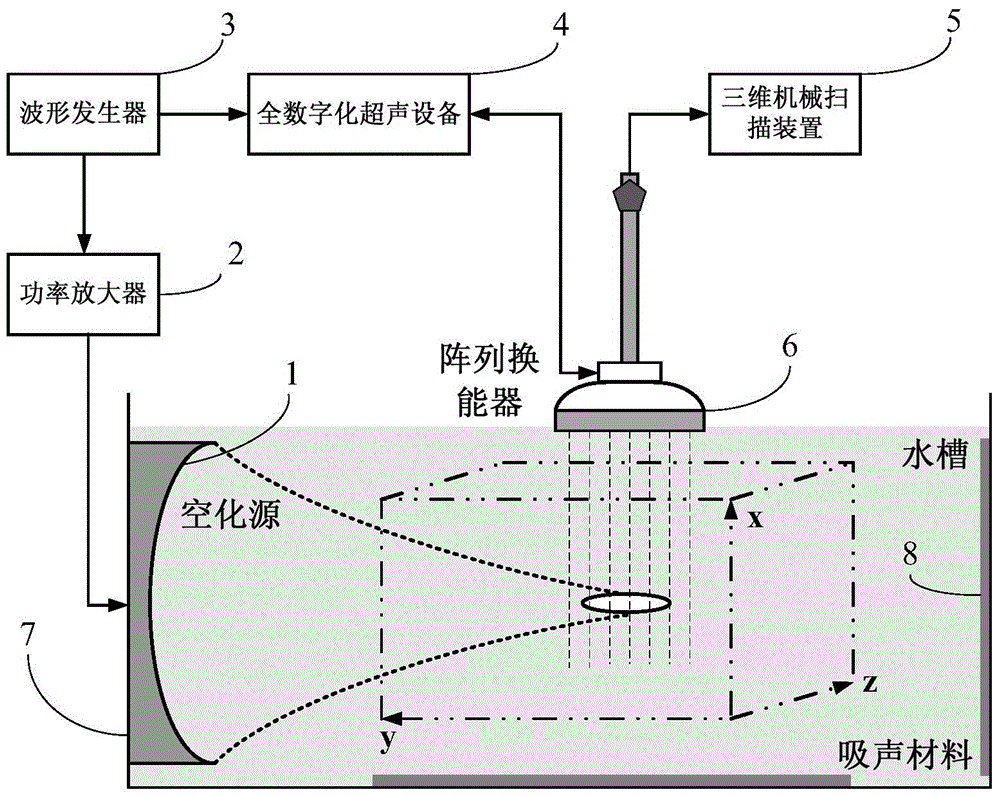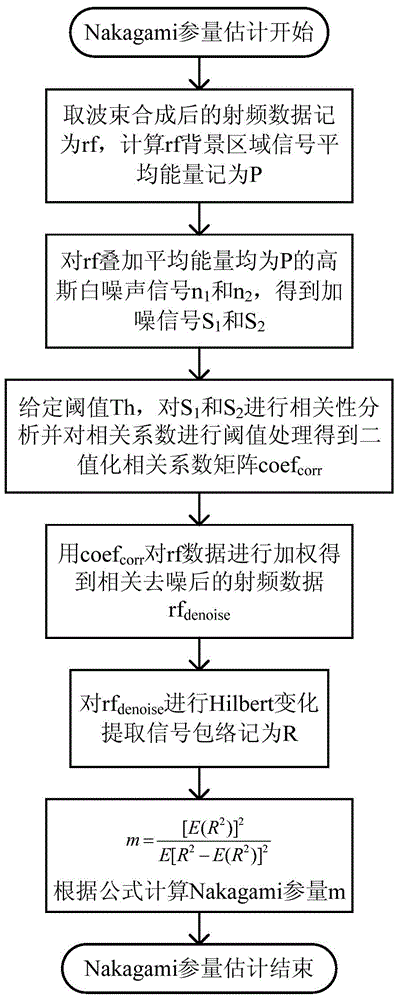Three-dimensional cavitation quantitative imaging method for microsecond-distinguished cavitation time-space distribution
A space-time distribution and imaging method technology, applied in image enhancement, material analysis, image analysis, etc., can solve problems such as asymmetry, inapplicability to in-situ research, and inability to reflect cavitation intensity distribution
- Summary
- Abstract
- Description
- Claims
- Application Information
AI Technical Summary
Problems solved by technology
Method used
Image
Examples
Embodiment 1
[0076] Example 1. Taking medium tap water as an example, the pulse length of high-intensity focused ultrasound is 10us-200ms, and the electric power is 100W. Cavitation and cavitation density quantitative three-dimensional imaging of cavitation bubbles generated under the experimental conditions:
[0077] (1) use figure 1The experimental device, tap water is injected into the water tank, the high-intensity focused ultrasonic transducer is fixed on the side wall of the water tank, the Sonix-Touch full-digital ultrasonic device is used to emit a wide beam to detect cavitation microbubbles, and the array transducer propagates along the high-intensity focused ultrasonic wave The direction is placed so that its central position corresponds to the focal area of the high-intensity focused ultrasound transducer, and the synchronization between the two is realized by the dual-channel arbitrary waveform generator AWG420;
[0078] (2) Set the pulse length of high-intensity focused ultr...
Embodiment 2
[0084] Embodiment 2. Under the condition of pulsating flow, the pulse length of high-intensity focused ultrasound is 20us, the electric power is 100W, the pulsation frequency is 80 times / second, the flow velocity is 5cm / s, and the pipeline diameter is 4mm. Quantitative 3D imaging of cavitation and cavitation density:
[0085] (1) Prepare agar gelatin imitation vascular tissue phantom, mix agar (3%), gelatin (12%) and degassed water (85%), heat and stir until completely dissolved, put in a degassing box for 30 minutes, pour After entering the mold and waiting for cooling and solidification, slowly pull out the tube to form a pipeline. The two ends of the pipeline are connected with latex tubes and connected to a pulsating pump. The pulsating pump flows the liquid from the storage tank through the pipeline into the waste liquid pool, forming a pulsating flow in the pipeline.
[0086] (2) adopt Figure 4 The experimental device, tap water is injected into the tank, the high-inte...
PUM
 Login to View More
Login to View More Abstract
Description
Claims
Application Information
 Login to View More
Login to View More - Generate Ideas
- Intellectual Property
- Life Sciences
- Materials
- Tech Scout
- Unparalleled Data Quality
- Higher Quality Content
- 60% Fewer Hallucinations
Browse by: Latest US Patents, China's latest patents, Technical Efficacy Thesaurus, Application Domain, Technology Topic, Popular Technical Reports.
© 2025 PatSnap. All rights reserved.Legal|Privacy policy|Modern Slavery Act Transparency Statement|Sitemap|About US| Contact US: help@patsnap.com



